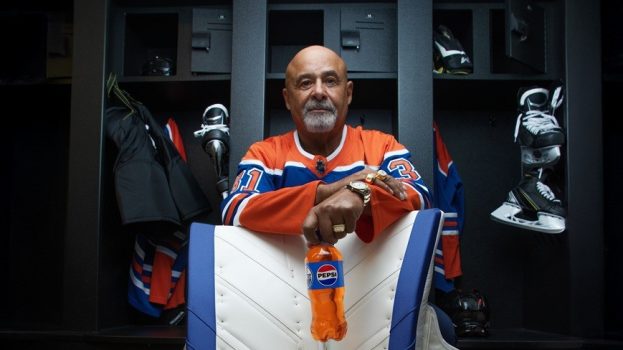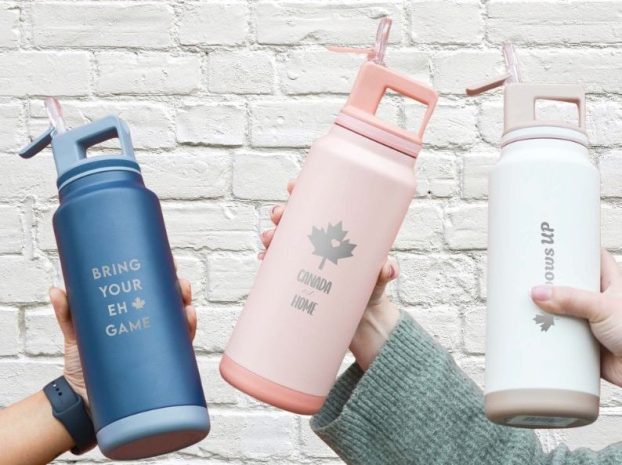Now that product placement has become so ubiquitous, the man who invented the practice naturally has a new obsession – product placement measurement.
Frank Zazza, CEO of New Rochelle, N.Y.-based iTVX, was behind the famous Reeses Pieces scene in E.T, and the Junior Mints and all the other hilarious brand storylines in Seinfeld, through AIM Promotions, the creative placement company he founded in 1978. Five years ago, he set up iTVX to devise a method to measure the value of product placement, and launched the iTVX System in 2003.
It’s timely, as product placement continues to swell. Stamford, Conn. media research firm PQ Media says the overall product placement market jumped by 30.5% to US$3.46 billion in 2004, US$1.87 billion of it in TV. By 2009 the firm says the overall number will reach US$6.94 billion.
As a result, advertisers are now dealing with clutter, as suggested by numbers from Place*Views, Nielsen Product Placement U.S., a Web-based system that identifies brands featured in product placement, as well as the type of placement used, when and where it occurred, and the audience size and demographics for the program minute at the time of occurrence. During 15 telecasts (Jan. 1 to Dec. 31/05), it found NBC’s The Contender had 7,514 product placement occasions. Everlast Worldwide recorded 3,061 visual hits in 60 telecasts of various shows. And in part because American Idol on Fox had 3,357 product placement occasions over 43 episodes, Coke scored 3,306 hits in 413 telecasts. (NMR Canada expects to launch Place*Views in this country soon.)
Not surprisingly, then, marketers are pushing for measurement tools – and broadcasters like TVA and Global are complying.
So far, media planners have been making product placement choices based on matching a program’s audience to their clients’ key customer demo – and gut instinct. ‘It’s very difficult [to measure effectiveness] because we cannot isolate the value of it,’ admits Jeanne Northcote, SVP group account director on the P&G business at The Media Company in Toronto. ‘We analyze audiences [and we] do all the analysis of how [the placement] compares in cost efficiency to, and how much more or less effective it is than a 30-second spot.’
TVA, the Quebec network that introduced top reality shows like Star Académie, hopes to get a handle on product placement measurement soon. It has hooked up with iTVX and will be conducting four to six tests of the system during the first half of this year.
‘iTVX will measure the level of quality of our integration or placement and we will also contract for some awareness research,’ says Reneault Poliquin, VP of TVA. ‘After that we’re going to try to establish collaboration with advertisers and agencies to set some kind of benchmark and offer it on a larger scale.’
Zazza’s system uses more than 50 variables to equate the value of a product placement or integration to what iTVX calls a Q Ratio, a decimal fraction of a 30-second commercial. Variables include psychological and perceptual factors, external forces such as demo and psychographics of the audience, brand resonance, salience, and awareness as well as the length of time the product is on screen, context, clarity, integration, and involvement.
The resulting Q Ratio could be a value less or greater than a 30-second spot and the cost of the placement is based on that value as are any make-goods. ‘If the Q Ratio is 3.5, cost of the placement is 3.5 times that of a 30-second spot on that network,’ explains Zazza. ‘Let’s say on Desperate Housewives the cost of a 30-second is $400,000, so you’re looking at a million dollars plus for placement. No brand manager will ever have a problem with that because the scream around the industry is ‘only what gets measured, gets bought.”
Measurement and assessment of product placement is also top of mind at CanWest MediaWorks. In addition to talking to iTVX about its system, Gaye McDonald, VP of Marketing Ventures, CanWest’s cross-platform sales unit, says the company is researching some new product integration projects to look at product recall, attitude, intent to purchase, and impact on product sales in order to determine the best evaluation process. One arrangement to be studied is the integration of Canadian Tire as the lead brand in a new Global reality program, From the Ground Up With Debbie Travis, launching in April.
Meanwhile, Nielsen Media Research U.S., like iTVX, is conducting a valuation study to assess the factors impacting product placement effectiveness, such as location of the product in the scene, whether it’s used or endorsed by a character, as well as whether effectiveness varies between loyal and casual viewers.
The good news, if Microsoft’s recent experience with The Apprentice III is any indication, is that product integration can indeed boost sales. Dustin Grosse, GM of sales and marketing for Microsoft Office’s Real Time Collaboration Group, based in Redmond, Wash., says that there was an immediate spike in sales volume after the group’s Live Meeting, its Web conferencing service product, was featured on the show.
Microsoft leveraged the program effectively by, for instance, having
winner Randal Pinkett join Grosse at a 90-minute Webcast at Nasdaq.
Grosse credits the episode with being responsible for one-third of leads generated for the month during which it aired. He says the investment was paid off in one quarter. ‘If I can link sales activity and growth versus cost in a short period, that feels pretty good. Brand awareness and value is icing on the cake. [It] would be harder to show, if that’s what you’re basing success on.’
The Pontiac Solstice was also unveiled on The Apprentice III. In Canada, GM, with help from its media agency M2 Universal, dominated the night with frequent, five- to 10-second, direct response messages that drove viewers to a microsite to enter a contest to win their own Solstice. The messages ran two hours prior to, during and for two hours after the show. It generated 200,000 microsite visits – 45,000 in the first two days – as well as 100,000 contest entries.
Says M2 Universal president Hugh Dow: ‘There’s no arguing with Web site traffic or responses. It’s pretty strong evidence of the power that can be generated from product placement.’
WHO’S PLACING HERE?
* M2 Universal viewed Global’s steamy Falcon Beach as the perfect place to integrate its client GM. Pontiac, Cadillac and Buick are featured throughout the first season, with each vehicle being matched with the character most closely mirroring the consumer profile of the brand. For instance, the Pontiac Solstice is driven by Paige, the lead female character, while her mother drives a Cadillac SRX.
In addition, GM is integrated into a contest on the Falcon Beach Web site giving away a trip for two to the Grammy Awards in LA. To enter, contestants must correctly name the character who drives the Solstice.
* Currently, Ford has a prominent role in the second season of Global’s futuristic biotech thriller ReGenesis where the lead character, a molecular biologist, drives Ford’s Escape Hybrid.
* This past fall on Global, The Apprentice: Martha Stewart got the virtual touch with Cadbury’s Caramilk brand. Eleven digital product insertions were made throughout the 13-episode series with a Caramilk bar popping up in various scenes like on a desk or kitchen table, at a meeting, and in purses. The insertions were made in the most appropriate scenes and subject to client approval.
* In the past year, P&G bought into Debbie Travis’ Facelift where Swiffer brooms and Bounty paper towels are used to clean up after the decorating job. P&G brands have also been integrated into storylines. For example, from January to April, 2005 on CTV’s Instant Star, Herbal Essences was seen as sponsor of a music contest and in spring 2004 on Degrassi, the Pantene brand sponsored the high school prom. PS























